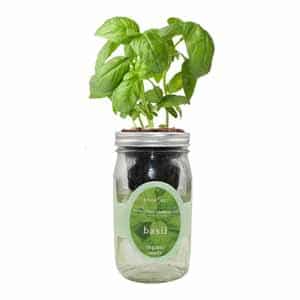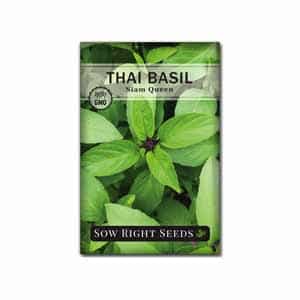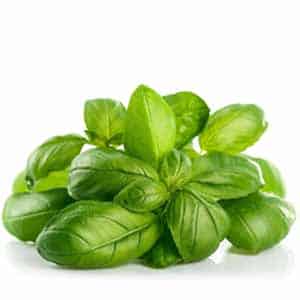How to Grow Basil Using the Kratky Method of Hydroponics
If you’re looking for a simple, fuss-free way to grow basil (or any other plant, for that matter), Kratky basil is for you. The Kratky method of growing basil is a type of passive hydroponics, which means that it doesn’t require any pumps or moving parts to circulate the nutrient solution.
Here’s what you’ll need to get started growing basil with Kratky:
- A clear quart container (jar, vase, etc.) – I prefer mason jars
- Basil seeds – any basil seeds will work
- Hydroton clay pellets (pebbles) or other growing medium
- Nutrient solution
The list is short – this is not only inexpensive, but super simple.
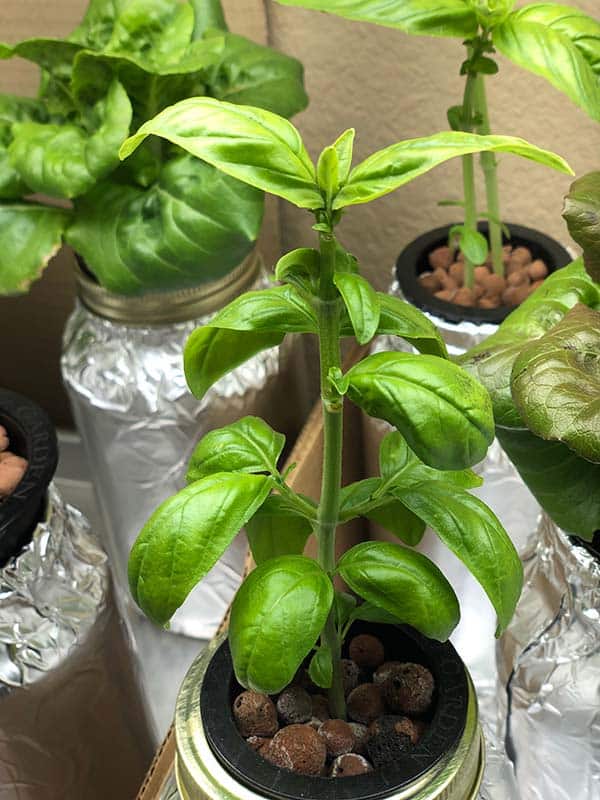
Kratky Hydroponic Basil – Our Favorites for Growing Basil with the Kratky Method
Advertisement
I bought these CZ net cups and will never buy another brand. They have been used year over year 5+ years.
I love these gro-block rockwool cubes. They keep the rockwool off your hands and soak well.
Before I got these, I used clay pebbles and/or foam cutouts. These fit so much better and block all light.
This is only wishlist. I plan on trying these in the the fall. You can see in my pics I currently use tin foil.
As an Amazon Associate I earn from qualifying purchases.
How does growing basil using Kratky hydroponics work?
To start, fill your container with water and add enough nutrient solution to reach a level just below where you’ll be planting the seeds. Then, add your hydroton pellets or other growing medium to the container. You’ll want to use enough so that the basil seeds have plenty of room to grow, but not so much that the container is too full.
Next, plant your basil seeds in the hydroton pellets or other growing medium. Make sure that you don’t plant them too close together, as they will need space to grow. Once the seeds are planted, gently place the container in a sunny spot and wait for them to sprout.
You’ll need to keep an eye on the water level in the container and add more as needed. The roots of the plants will take up water as they grow, so you’ll need to replenish it regularly. Other than that, there’s not much else to do! The Kratky method is a great way to grow basil (or any other plant) with minimal effort.
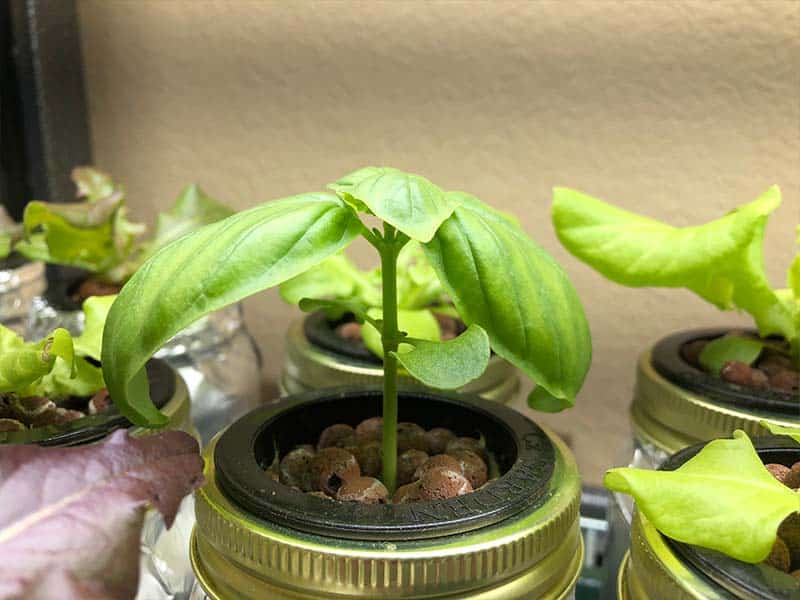
Growing basil hydroponically using the Kratky hydroponic method can be done on a small scale or a large scale. This is a cloned basil plant that was taken from a mature plant. While you can always start basil plants from seed, you can effectively grow unlimited basil from one starter plant by cloning the basil plant repeatedly.
Growing Basil Kratky Style
Learn what you need to know about Kratky Basil.
In this article, we will cover:
- What is the Best Basil Variety to Grow with Kratky Hydroponics?
- How Big Will Basil Get in Kratky Containers?
- When Should I Harvest Basil Grown in Kratky Containers?
- How Much Light Does Kratky Basil Need?
- What is the Ideal Temperature for Kratky Basil?
- What is the Ideal pH for Kratky Basil?
- How Often Should I Fertilize Kratky Basil?
- Is Kratky Basil Easy to Grow?
So let’s learn all about growing basil using the Kratky method!
Kratky Hydroponic Basil – Our Favorites for Growing Basil with the Kratky Method
Advertisement
As an Amazon Associate I earn from qualifying purchases.
Kratky Basil Hydroponic FAQs
What is the Best Basil Variety to Grow with Kratky Hydroponics?
There are many different varieties of basil, but some are better suited for hydroponics than others. If you’re looking for a Basil variety that does well with the Kratky method, we recommend ‘Genovese’ or ‘Italian Large Leaf’.
These varieties are known for their large leaves and strong flavor, making them great for culinary use. However, any type of basil will do well with the Kratky method, so feel free to experiment and see what you like best.
When Should I Harvest Basil Grown in Kratky Containers?
You can begin harvesting basil leaves when the plants are about 6 inches tall. However, we recommend waiting until they are 8-12 inches tall for the best flavor.
To harvest, simply cut the leaves off at the stem using sharp scissors or a knife. You can also harvest the entire plant by cutting it at the base.
Once you’ve harvested the leaves, you can use them fresh in salads, pesto, or any other dish that you like. You can also store them in the fridge for later use.
How Much Light Does Kratky Basil Need?
Basil plants need a lot of light to grow well. We recommend placing them in a sunny spot where they will get at least 6 hours of direct sunlight per day.
If you live in a climate with long winters and short days, you may need to use artificial lighting to provide your plants with enough light. LED grow lights are a great option for indoor gardening.
Is Kratky Basil Easy to Grow?
Yes, kratky basil is very easy to grow! The Kratky method is simple and requires minimal effort, making it a great option for beginner gardeners. With that said, there are a few things you need to keep in mindky basil.
First, make sure you choose a container that is large enough to accommodate the plants. Second, keep an eye on the water level and replenish it as needed. Third, give the plants enough light. And finally, fertilize them every 2 weeks with a water-soluble fertilizer.
If you follow these simple guidelines, you should have no problem growing Kratky basil that is healthy and delicious!
How Big Will Basil Get in Kratky Containers?
Basil plants can get quite large, so it’s important to choose a container that is big enough to accommodate them. We recommend using a container that can hold at least a gallon of water, as this will give the plants plenty of room to grow.
If you’re growing multiple plants in one container, make sure to space them out so that they have enough room to spread their roots.

Above, Kratky grown basil that was harvested and then dried for storage. I rarely use dried basil, since we have a steady growth of basil in our hydroponic garden.
Below, are tall, prolific basil plants that were grown indoors hydroponically using Kratky mason jars. When indoors, they do not grow as bushy and tall, due to limited root space. Once planted outdoors, these basil plants took off.
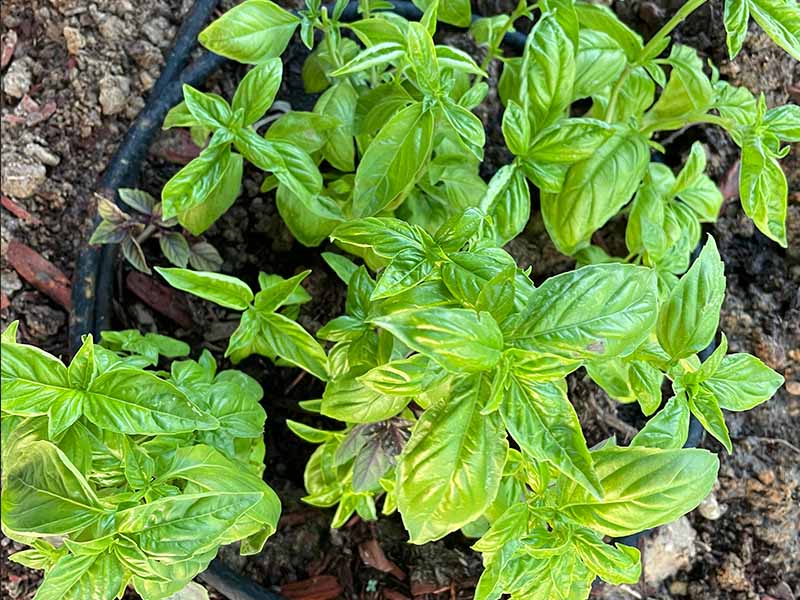
As an Amazon Associate I earn from qualifying purchases.
Kratky Basil Nutrients
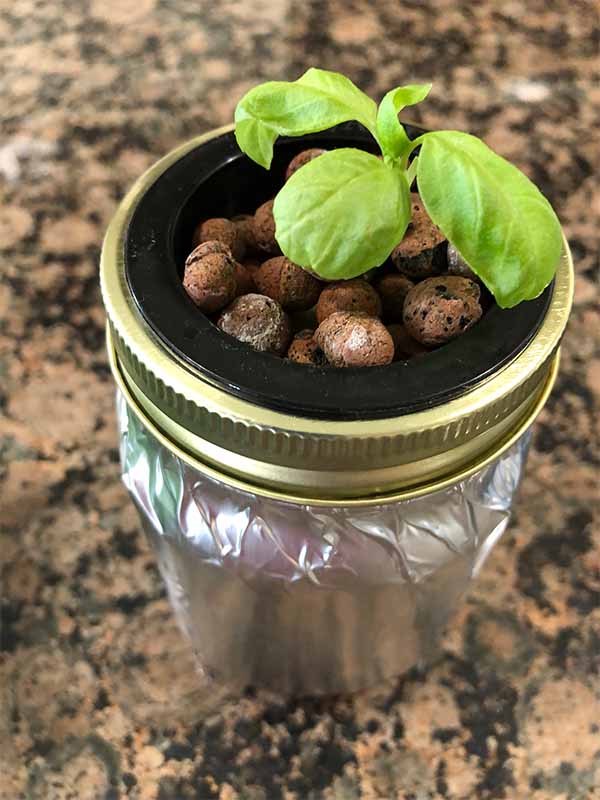
Cloned basil plant from a mature plant, transplanted into a Kratky mason jar. You can even clone store-bought basil and use cuttings to clone them.
What is the Ideal pH for Kratky Basil?
The ideal pH for kratky basil is between 6.0 and 7.0. You can test the pH of your water and nutrient solution using a digital pH meter.
If the pH of your water or nutrient solution is too high or too low, you can adjust it using pH up or pH down solutions. These are available at most gardening stores.
How Often Should I Fertilize Kratky Basil?
You should fertilize kratky basil every 2 weeks with a water-soluble fertilizer. We recommend using a fertilizer that is specifically formulated for hydroponic plants, as this will give them the nutrients they need to grow well.
You can also add compost or worm castings to your kratky basil container to provide extra nutrients. Simply add a handful of compost or worm castings to the water and stir it around until it is evenly distributed.
What is the Ideal Temperature for Kratky Basil?
Basil plants prefer warm temperatures and will not do well if the temperature drops below 50 degrees Fahrenheit. If you live in an area with cold winters, we recommend growing basil indoors where it will be protected from the cold weather.
In general, basil plants do best in temperatures between 70 and 85 degrees Fahrenheit.
Best Basil Growing Light Conditions for High Yield
The amount of light your Kratky basil plants receive will determine how well your plants grow and how fast. When I grow basil indoors, I use LED grow lights to really help my plants thrive.
I grow several plant types on the same shelves, but do sort them by the amount of light I want them to get. For instance, one of my selves is on a 16-hour full light timer, while another is on a 18-hour timer. The lights I purchased (you can get them here) also have the ability to be raised or lowered.
Your light should be close enough to the tops of the plants to provide maximum light without burning the leaves. If your leave tips are browning or dry, you may be too close.
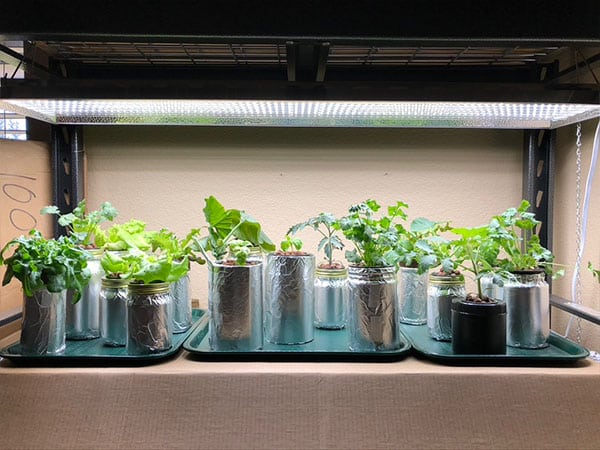
Kratky Hydroponic Strawberries – Our Favorites for Growing Strawberries with the Kratky Method
Advertisement
This is the exact grow light I use. They are great and so far, lasted 5+ years.
MaxiGro is the hydroponic fertlizer I use for my Kratky basil plants.
These cloning snips work perfectly for creating the basil clones.
This is only wishlist. I plan on trying these in the the fall.
As an Amazon Associate I earn from qualifying purchases.
Kratky Basil is a Favorite Among Hydroponic Gardeners
The Kratky method is a great way to grow basil with minimal effort. With this method, you don’t have to worry about pumps or moving parts – simply plant your seeds and let them grow. Keep an eye on the water level and add more as needed, and you’ll have fresh basil leaves in no time. While nutrients are important for most plants, basil requires very little to grow outside of fresh water and light.
In the picture on the right, you can see a couple of basil plants under the grow lights on the Kratky shelf in my office, where I grow most of my garden. You can see two basil plants at different stages.Basil is one of my favorite plants to grow in my Kratky garden and I love making salads with the lettuce I grow as well.
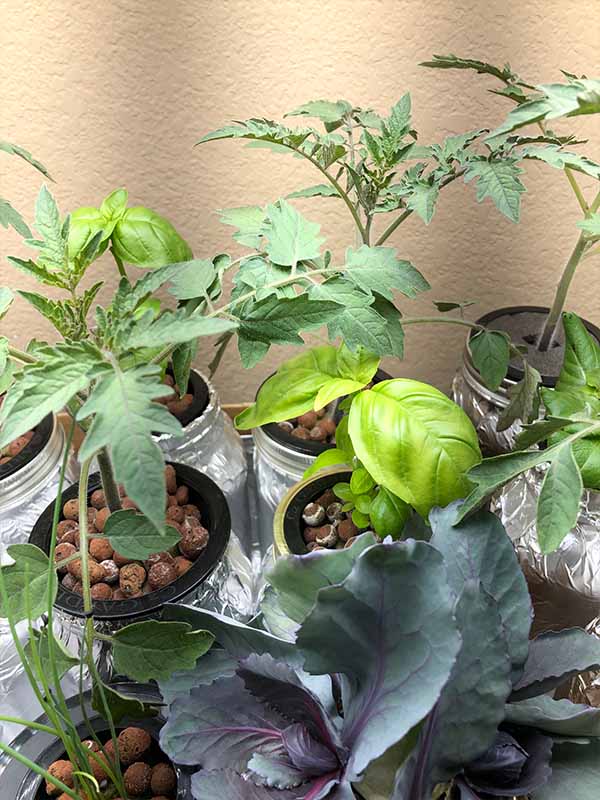
Here’s a list of common and unique varieties of basil:
- Sweet Basil – The most widely used basil, known for its sweet and mild flavor.
- Genovese Basil – Italian basil with larger leaves, often used in pesto.
- Thai Basil – Has a spicy, anise-like flavor and is common in Thai cuisine.
- Holy Basil (Tulsi) – Sacred in India, with a strong clove scent, used in teas and medicinal remedies.
- Lemon Basil – Offers a citrusy flavor, great for seafood dishes.
- Lime Basil – Similar to lemon basil, with a lime twist.
- Cinnamon Basil – Has a warm, spicy flavor, excellent in fruit salads and teas.
- Purple Basil – Beautiful dark purple leaves, slightly spicy and peppery.
- Greek Basil – Compact, with small leaves, great for containers and garnishing.
- Spicy Globe Basil – Small, rounded leaves with a bold, spicy flavor.
- African Blue Basil – Ornamental and edible, with a slight camphor flavor.
- Greek Columnar Basil – Upright growth, ideal for limited space, with traditional basil flavor.
- Mammoth Basil – Large, crinkled leaves, great for wraps and garnishes.
- Dark Opal Basil – A type of purple basil, also slightly spicy, ornamental.
- African Nunum Basil – Grows wild in parts of Africa with a strong clove flavor, used medicinally.
Each variety has unique culinary and aesthetic qualities suited to specific dishes and garden settings.
Recommended Plastic Containers for Kratky Hydroponics
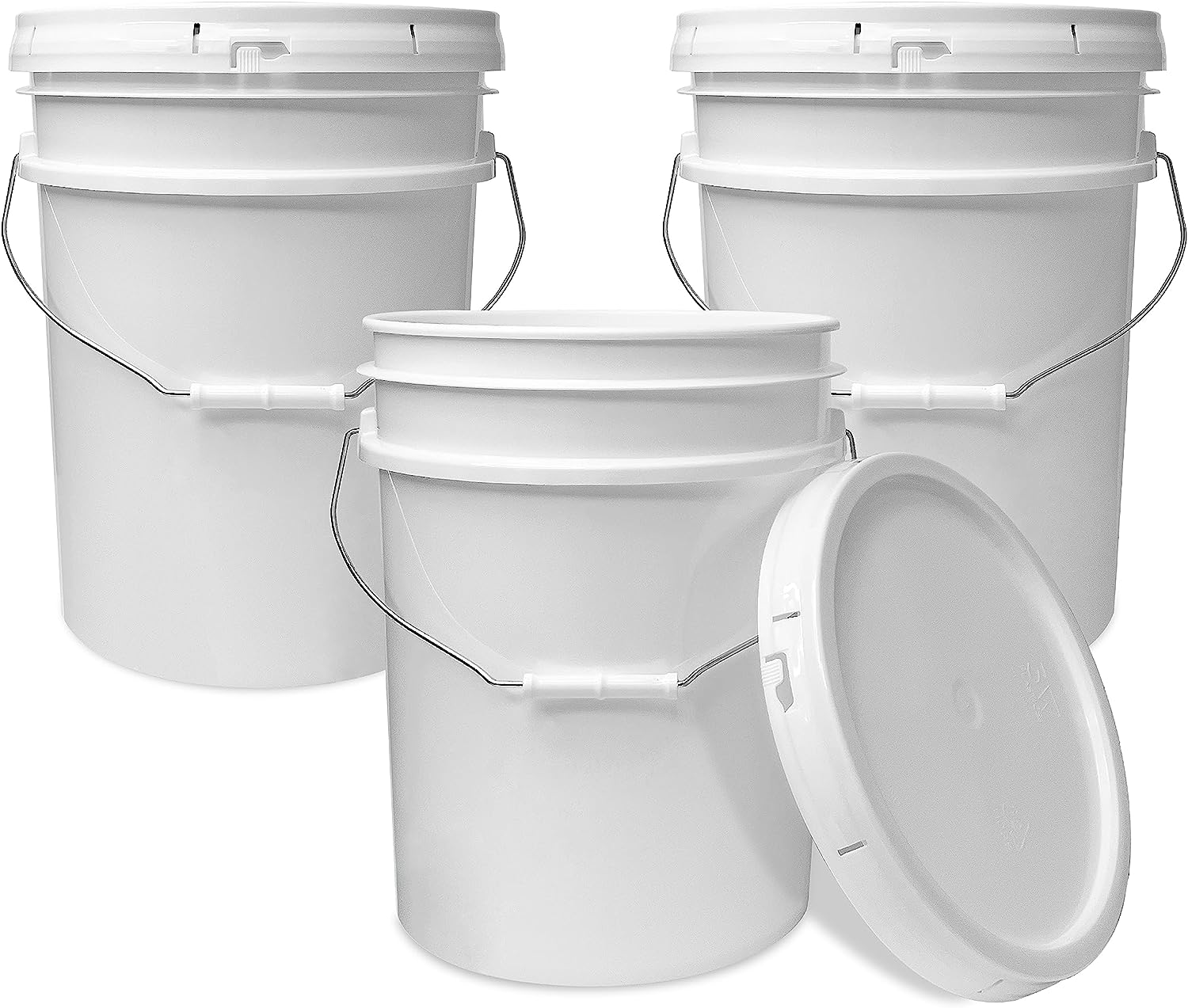
5 Gallon Plastic Buckets
The perfect size for growing Kratky Container Tomatoes and they are FOOD GRADE.
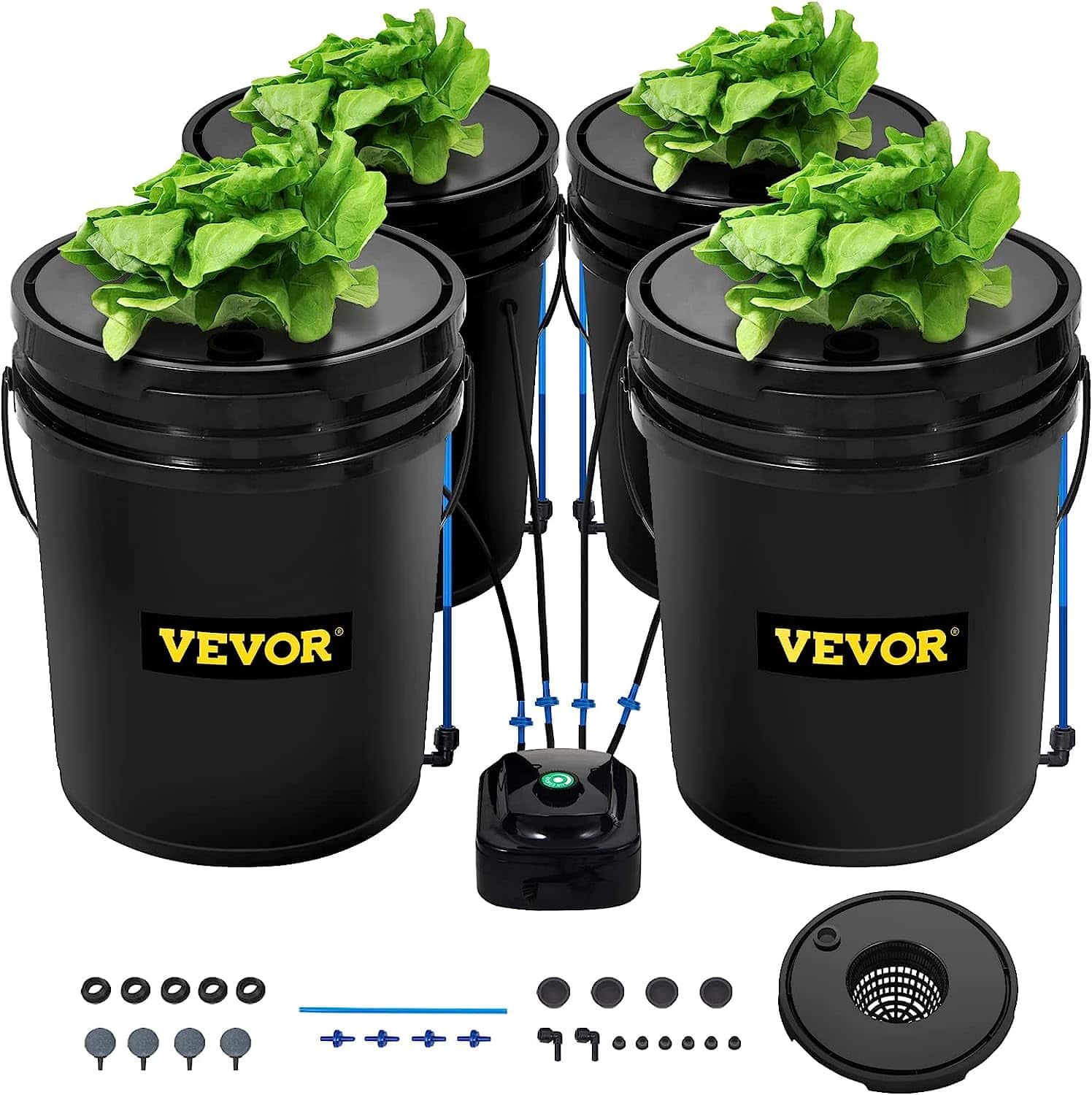
4 Bucket Hydroponic System
No work hydroponic gardening system with 4 containers. Includes aerator and net cups.
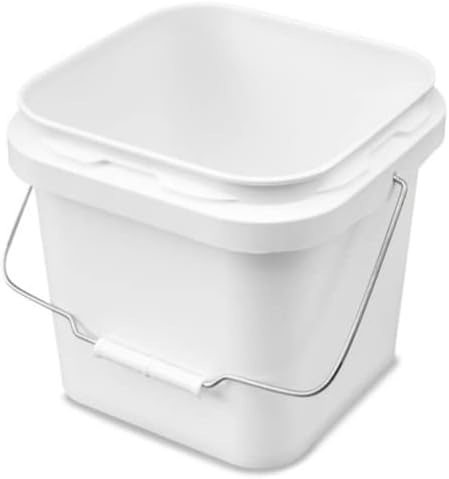
Two Gallon Plastic Containers
These are great for your plants that do not take up. as much space or water.










